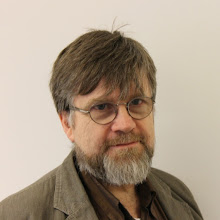I had fitted my control keypad into the beacon box...

... and successfully adapted my menu software to allow me to select manually from one of eleven different frequencies within the band, roughly 10 Hz apart, by adjusting the internal DDS. Then all I needed to do was implement "Slow Frequency Hopping" by allowing the controller automatically to increment the frequency through these steps after each 6 Joule burst of WSPR transmission.
For the early experiments I also shifted the DFCW and S/MT Hell emissions, as you will see...
Here's the (locally monitored) signals towards the end of the QSY cycle...

You can see the rising WSPR frequencies (at 11:48 and 11:58) and the "reset" back to the lowest frequency at 12:08.
In between, you can see my DFCW and Hell signal encroaching into the WSPR band (also there are local images which appear at spacings of [multiples of] 50Hz - so I guess they're mains "hum" related).
This was faithfully received by a number of stations, including Helmut, df5ff...
This was faithfully received by a number of stations, including Helmut, df5ff...

In the course of developing the code I made some accidental QSYs, including this in the DFCW signal received by Joachim, pa1gsj...

The refined controller software now allows me to "frequency hop" the WSPR signal, whilst maintaining a constant QRG for the QRSS emissions. I can switch the frequency hopping on and off and nudge the frequencies of the WSPR and QRSS signals up and down their respective bands independently.
I'll let you know if all this delivers any measurable benefit - benefit or not, it has certainly been fun!
...-.- de m0xpd



























